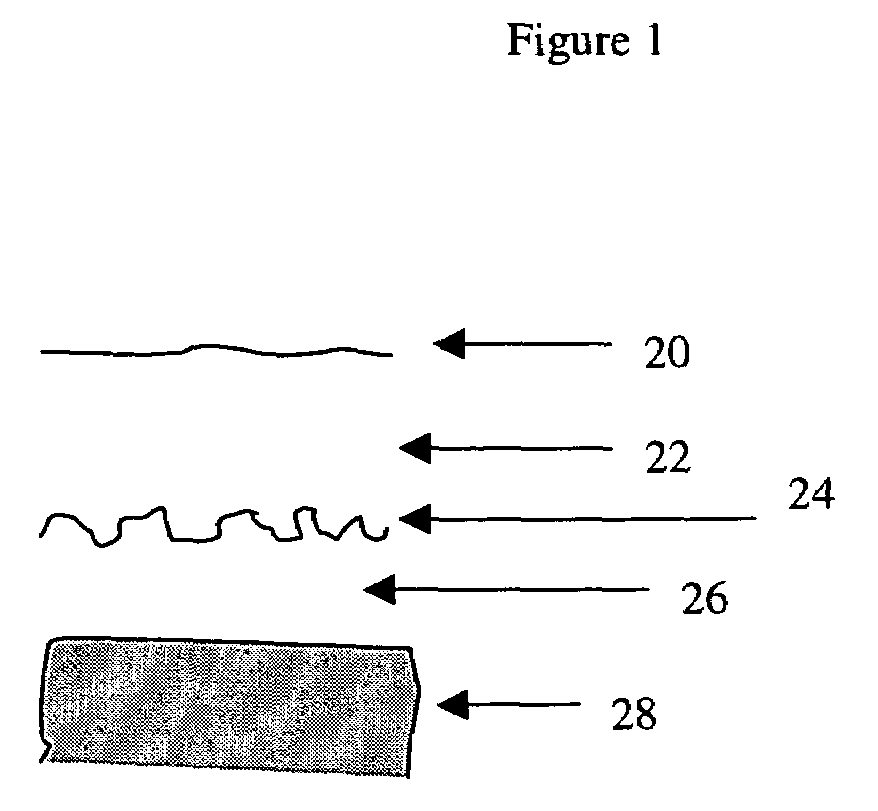Surfacing of metal fluoride excimer optics
a technology of excimer optics and metal fluoride, which is applied in the field of improved coating of optical elements, can solve the problems of material surface degradation, increased degradation, and increased degradation, and achieve enhanced chemical vapor deposition, high purity, and high purity silica
- Summary
- Abstract
- Description
- Claims
- Application Information
AI Technical Summary
Benefits of technology
Problems solved by technology
Method used
Image
Examples
Embodiment Construction
[0024]In the following description and in the Figures, CaF2 is used as the exemplary alkaline earth metal fluoride single crystal material that is made into a coated optical element in accordance with the invention. However, it should be remembered that the invention applies to all optical elements made of alkaline earth metal fluorides or elements made from mixtures of such alkaline earth metal fluorides. In addition, the invention applies to all optical element surfaces subjected to cutting, grinding and polishing; for examples the two faces of a laser window or lens.
[0025]The invention is directed to coated optical elements made from alkaline earth metal fluorides, and especially to coated optical elements made from calcium fluoride, CaF2, or a mixture of calcium fluoride with one or more other alkaline earth metal such as barium, magnesium or strontium; and to a method of making such elements. The optical elements according to the invention have improved transmission properties ...
PUM
| Property | Measurement | Unit |
|---|---|---|
| thickness | aaaaa | aaaaa |
| wavelengths | aaaaa | aaaaa |
| wavelengths | aaaaa | aaaaa |
Abstract
Description
Claims
Application Information
 Login to View More
Login to View More - R&D
- Intellectual Property
- Life Sciences
- Materials
- Tech Scout
- Unparalleled Data Quality
- Higher Quality Content
- 60% Fewer Hallucinations
Browse by: Latest US Patents, China's latest patents, Technical Efficacy Thesaurus, Application Domain, Technology Topic, Popular Technical Reports.
© 2025 PatSnap. All rights reserved.Legal|Privacy policy|Modern Slavery Act Transparency Statement|Sitemap|About US| Contact US: help@patsnap.com



